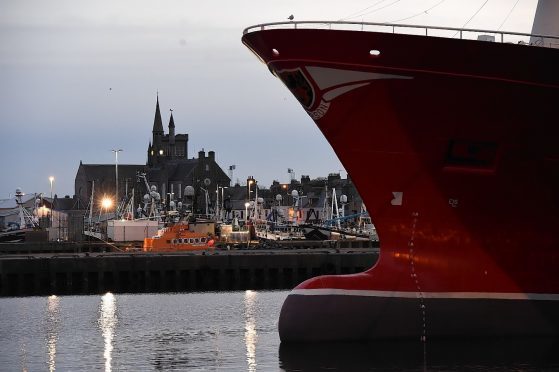An ambitious scheme to upgrade the electricity link between businesses and vessels in a north-east harbour has been hailed “a great success”.
Firms based at the port in Fraserburgh and trawlers docked in the harbour are currently forced to use diesel generators to supplement their power.
But the arrangement has been dubbed a hindrance to future development in the area and, now, work to upgrade the mains cable to the port has been completed.
Fraserburgh councillor Charles Buchan – the chairman of Aberdeenshire Council’s fisheries committee – claimed the £1million scheme was a big step forward for the local economy.
He said: “I was delighted to hear the final switchgear connections have been made, and this long-awaited project has been completed.
“The pelagic fleet can now have electrical power delivered to them at the quayside, and they do not have to run their engines in port to maintain their systems, thus making savings on fuel and repairs.”
Mr Buchan added that the development meant harbour-based fish processing firms would no longer face interruptions in power supply, and properties in the port would be more attractive to prospective companies with a guaranteed electrical supply.
He added that the cable was “important” to the Fraserburgh economy, and described the completion of the project as “a great success story”.
The scheme to connect the harbour to the national grid has taken nearly five years to come to fruition and was spearheaded by a group of organisations, including the local harbour board, Aberdeenshire Council, Scottish Enterprise and SSE.
A grant was also secured from the European Union’s European Fisheries Fund.
The refit of the harbour’s power grid came after commissioners struck a deal with Pegasus Power and Communications and was finished in two phases.
The first part of the scheme involved SSE installing a new high-voltage cable down to the harbour area.
Thereafter, substations were created around the quayside to deliver the power and allow boats to turn of their engines while moored.
In the long term, it is expected larger trawlers and those tied up during quota restrictions will be the biggest beneficiaries of the scheme.
